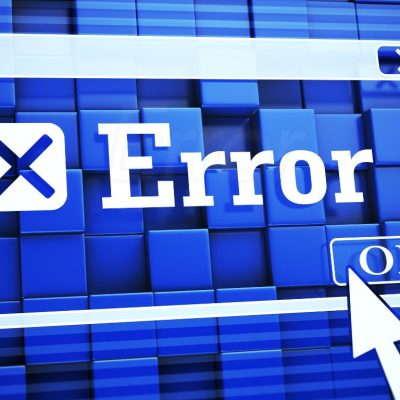A checksum error is one of those issues that can pop up in different parts of your computer life — whether you’re extracting files in WinRAR, starting up your PC, or downloading software packages online. It’s frustrating, but the good news is that these errors usually have simple explanations and easy fixes.
Let’s break down what a checksum is, why these errors happen, and how you can solve them depending on the situation.
What Is a Checksum?
A checksum is like a fingerprint for a file. When you create, download, or move a file, your computer calculates a small code (the checksum) that represents the file’s exact content. When that file is opened or verified later, the checksum is recalculated and compared.
If both values match, the file is fine. If they don’t, it means something has changed — the file could be corrupted, incomplete, or even tampered with.
That’s what causes a checksum error.
1. Checksum Error in WinRAR
When you’re trying to extract a ZIP or RAR file in WinRAR and see a checksum error, it means the archive is damaged or incomplete. This can happen for several reasons:
- Bad sectors on your hard drive
- A corrupted or interrupted download
- Not enough storage space
- A sudden power cut during file transfer
- Malware infection
How to Fix It
Here are six proven methods that usually fix WinRAR checksum errors:
1. Use the “Keep Broken Files” Option
Right-click your RAR or ZIP file → Choose Extract Files → In the Miscellaneous section, tick Keep broken files, and start extraction. This lets you recover usable parts from a damaged archive.
2. Download the File Again
If the file was downloaded, it might not have completed properly. Try re-downloading it, ideally over a stable connection and to a different folder or drive.
3. Reinstall WinRAR
Sometimes, the WinRAR app itself can be at fault. Uninstall it from Control Panel → Programs and Features, then reinstall the latest version from the official site.
4. Repair the Archive
Open the damaged file in WinRAR, go to Tools → Repair Archive, choose a destination folder, and let WinRAR rebuild the archive.
5. Free Up Disk Space
Make sure your drive has enough space for extraction. Delete temporary files or unused data before trying again.
6. Run a CHKDSK Scan
Open Command Prompt as Administrator and type:
chkdsk /r D:
(Replace D with your actual drive letter.) This scans your drive for bad sectors and repairs them automatically.
2. BIOS Checksum Error
The BIOS checksum error is different — it appears before your PC even boots. It happens when your computer’s BIOS (the system that runs before Windows starts) detects that its own data has been corrupted.
Why It Happens
- The CMOS battery on your motherboard is dead or weak
- You installed new or incompatible hardware
- The BIOS was updated incorrectly
- Power failure during a BIOS update
- Overclocking or manual BIOS tweaks gone wrong
Quick Fixes
1. Replace the CMOS Battery
Turn off your computer, open the case, and carefully replace the small coin-cell battery (usually CR2032). Then restart your PC.
2. Reset the BIOS Settings
If your PC can still access BIOS, select Load Defaults or Reset to Default Settings. If not, use the Clear CMOS jumper on the motherboard — your user manual will show the exact pins.
3. Remove New Hardware
If you recently added new RAM, GPU, or storage, remove it and try booting again. One of them might be incompatible.
4. Reflash or Update BIOS Properly
If your BIOS update failed earlier, download the latest version from your motherboard manufacturer’s website and carefully reinstall it.
Tip: Replacing the CMOS battery every few years can prevent this issue from happening again.
3. Checksum Errors in Software Downloads and Development
Checksum errors don’t just affect files or computers — they also appear when developers download or install software packages.
If you’ve seen messages like “checksum mismatch” or “hash verification failed” while installing something with conda, pip, or Docker, it means the file’s checksum doesn’t match what’s expected.
Common Causes
- Network issues during download
- Cached (old) files being reused in build pipelines
- Package tampering or corrupted mirrors
- Mismatched versions between local and remote repositories
How to Fix and Prevent Them
- Clear your cache regularly using commands like:
conda clean --all - Download only from trusted sources — official registries, not random mirrors.
- Avoid reusing old cache in CI/CD pipelines or automated builds.
- Use hash validation when installing packages. For example:
numpy==1.21.0 --hash=sha256:<expected_hash> - Lock your dependencies using environment files:
conda env export > environment.ymlThis ensures consistent and verified installs across all systems.
Why It Matters
Checksum validation protects you from tampered or corrupted code. Ignoring these warnings could let malicious or broken software slip into your workflow — something that’s becoming more common in today’s software supply chains.
Conclusion
Checksum errors can happen in many forms — a broken ZIP file, a BIOS alert, or a failed software install. But they all point to the same thing: data integrity problems.
Most of the time, the fix is simple — redownload, repair, reset, or replace. What matters most is paying attention when these errors show up. They’re not just random glitches; they’re your system’s way of saying something’s off.
Handle them early, and you’ll avoid bigger issues later.






